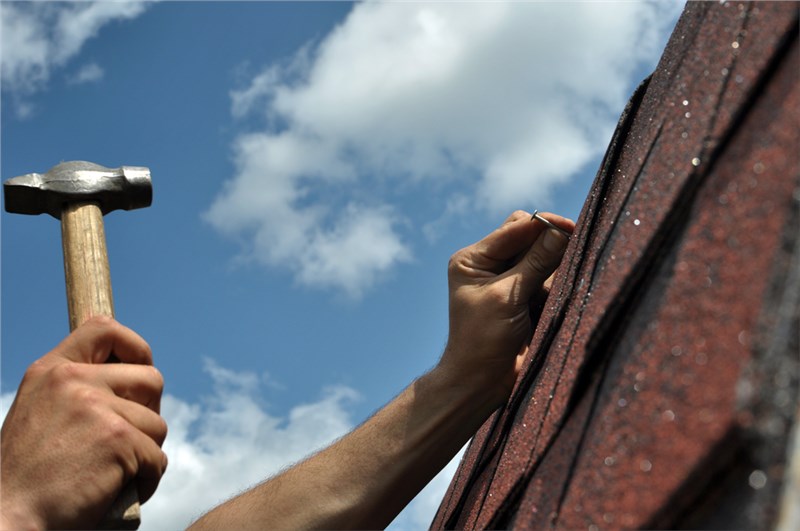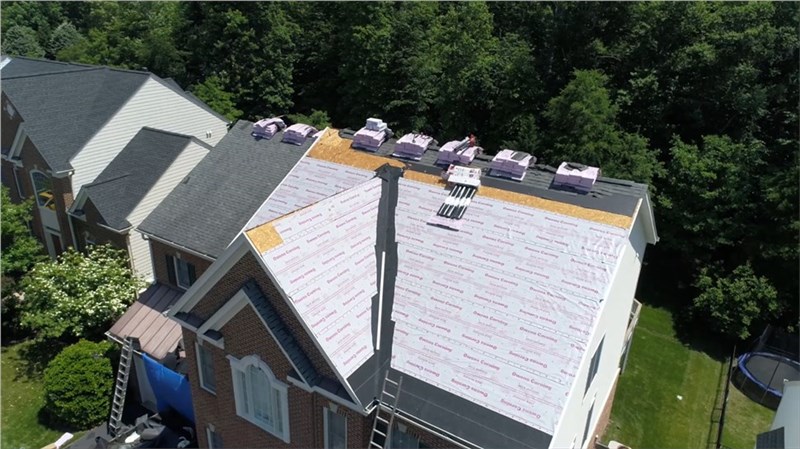
At DreamHome, we’re dedicated to providing revolutionary solutions for homeowners remodeling their homes. In this guide to roofing, DreamHome’strusted roof replacement contractors will share important information regarding rooftops, and some expert tips to help you extend the life of your roofing installation.
How Long Should My Roof Last?
There are multiple materials used along with a range of roofing styles that make up your roof. The different materials and roofing styles all inform how long your roof should last. We have provided a breakdown of the basic age range for each common roofing material below.
- Shingles (Composition): These shingles are made up of different organic materials and last between 12-20 years.
- Shingles (Asphalt): The most common type of shingle. This shingle type is made up of asphalt and lasts about 15-30 years.
- Shingles (Wood): Not as common as the other types, this type of shingle is expected to last about 20-25 years.
- Rubber Roofs: This style of roof is less common than the traditional shingles, but last a little longer. Average lifespan is 30-50 years.
- Metal Roofs: Growing in popularity, this type of roof lasts an average of 50-75 years, with premium metals lasting for a century or longer.
Rooftop Red Flags: Warning signs that it’s Time for Replacement
Sometimes problems occur that can shorten the lifespan of your roof. In other cases, the material has lived through the extent of its lifetime and will need to be replaced for optimal protection, energy-efficiency, and beauty. Knowing what warning signs to look for can help you stay on top of things if a replacement should become necessary. Here are some of the red flags that roof replacement is on the horizon:
- Roof Age: Let’s start with the obvious one. No matter how durable or taken care of your roof is, your roof will need replacement at some point in time. If you bought a house from a previous owner or two and the roof was never replaced, you will likely need to replace the roof yourself eventually.
- Sagging Roof Deck: Your roof deck can sag for a number of reasons. However, the main concern is that the integrity of your roof deck is compromised and can lead to disaster if left unfixed. A sagging roof deck is at greater risk for leaks and further breakdowns.
- Water Damage: Most commonly showing up as leaks that come through your ceiling, this is one type of damage that may require either a repair or replacement. The option chosen depends on the severity of the leak, overall condition of your roof, and location of the leak.
- Visible Holes and Cracks: Similar to water damage, this is a situation that can be resolved by repairing the roof. However, if the hole is large enough or there are numerous holes and cracks, you may want to consider replacement as any repair will only be so effective in comparison.
- Missing Shingles: A fairly common problem is the occasional missing shingle. Usually, you can replace the shingle or shingles while maintaining the rest of your roof. However, in some cases the missing shingles can be a sign of improper installation or an underlying issue, like the one listed below.
- Mold, Mildew, and Rot: Mold, mildew, and rot are the bane of all organic materials. Mold eats away at the shingles and support beams that make up your roofing structure. If you’re lucky enough to catch mold, mildew, and rotate the moment it starts growing - you may be able to get away with repairs only. However, mold, mildew, and rotting rooftops that have been neglected for a longer amount of time will likely need replacement as it’s likely that they’ve already compromised the structural integrity of your roof.
One thing to keep in mind when considering a roof replacement is your installation. Nine times out of ten problems with the roof, especially when the roof is still fairly new, can be attributed to poor installation practices and sub-quality materials. For a roof that’s guaranteed to stay strong for decades, make sure your installation company is a professional and reputable one—like our expert Virginia and Maryland contractors at DreamHome.
Professional Rooftop Installation, Repairs, and Maintenance
Your roof is among the most important features that make up your home’s exterior. An outdated or damaged rood can cause significant problems at any time of the year. In addition, your energy bill can rise on top of the expensive repairs needed. The key is to be proactive in your home’s maintenance and upkeep requirements, performing repairs or replacements at the moment that they become necessary.
If you need rooftop services, count on our team of Owens Corning Platinum Preferred Roofers at DreamHome to take care of things for you. Give us a call to speak with one of our trusted roof replacement contractors at DreamHome today about our roofing options, or fill out our online form to schedule your free, in-home pricing estimate now.
Tags
Subscribe to DreamHome, Inc.'s Blog





